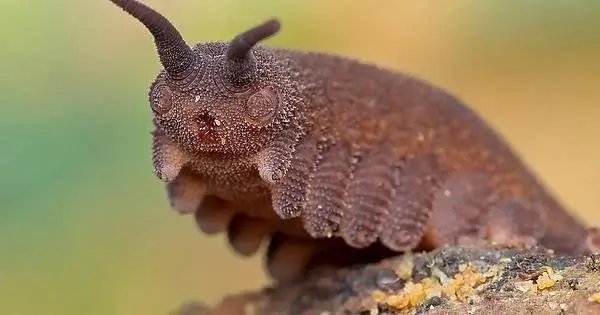
You might be wondering why we should care about these unusual organisms. Well, velvet worms play a vital role in their ecosystems, acting as predators of small insects and being part of the food chain for larger animals. Sadly, their habitats are threatened by human activities, climate change, and pollution. Let me explain what we know about their conservation status, the threats they face, and what we can do to help keep them around for generations to come.
What Are Velvet Worms?
Before diving into conservation issues, it’s helpful to understand what velvet worms are. Often referred to as **onychophorans**, these creatures are neither worms nor insects. They sit somewhere in between, belonging to their own phylum, which makes them quite special. Imagine a mix between a slug and a caterpillar, and you’re halfway there. They have soft, segmented bodies covered in a velvety texture, earning them their name.
Velvet worms are mostly nocturnal and thrive in humid environments like rainforests or leaf litter. They use a unique hunting method; they can shoot a sticky slime to trap their prey. Picture Spider-Man but with a far less glamorous outfit. This slime helps them catch insects, which is their primary food source.
Their unusual appearance and behavior make them a subject of interest for scientists studying evolutionary biology. While many species exist, their exact numbers are often unclear, making conservation efforts challenging.
Current Conservation Status
The conservation status of velvet worms varies significantly by species. Some are fairly common, while others are on the brink of extinction. The **IUCN Red List**, which assesses species’ risk of extinction, includes several velvet worm species, many of which are classified as vulnerable or endangered.
For example, species like *Peripatus* and *Euperipatoides* are facing sharp declines due to habitat loss and environmental changes. When we consider that some species are endemic, meaning they exist only in specific regions, the urgency for conservation becomes even more apparent. Protecting their habitats isn’t just about saving these worms; it’s about preserving entire ecosystems.
Conserving velvet worms is complex. It involves not just protecting the worms themselves, but also their habitats—a task requiring cooperation across multiple sectors, including conservationists, government bodies, and local communities.
Threats to Velvet Worms
Now that we understand their conservation status, let’s explore the threats velvet worms face. There are several significant challenges that put pressure on these extraordinary creatures:
- Habitat Destruction: Urbanization, deforestation, and agriculture often lead to the loss of damp habitats that velvet worms rely on. As we replace forests with buildings and farms, these creatures lose their homes.
- Climate Change: Changing weather patterns can disrupt the delicate balance of their ecosystems. Increased temperatures and decreased humidity can make survival difficult for velvet worms.
- Pollution: Chemicals from pesticides and plastics can seep into the environments where velvet worms live, posing serious risks to their health and reproduction.
- Over-collection: Some species are collected for scientific research or for the exotic pet trade, putting additional stress on their populations.
Addressing these threats is crucial for the survival of velvet worms. While some may seem overwhelming, awareness and conservation efforts can make a difference.
Conservation Efforts Worldwide
Globally, various conservation efforts aim to protect velvet worms and their habitats. Many countries have established **protected areas** where these species can thrive without human interference. For example, in New Zealand, some native velvet worms benefit from conservation programs focusing on habitat restoration and public education.
Education plays a significant role, too. Raising awareness about the importance of velvet worms can encourage community action and support for conservation initiatives. Environmental organizations are working to highlight the beauty and significance of these creatures through workshops, educational campaigns, and even social media outreach.
Additionally, researchers are focusing on studying velvet worm populations and their ecosystems to gather valuable data. By understanding their needs and vulnerabilities, we can develop targeted conservation strategies that address specific threats.
How You Can Help
You don’t have to be a scientist to contribute to the conservation of velvet worms. Here are some ways you can get involved and help these unique creatures:
- Educate Yourself and Others: Knowledge is power. Learn more about velvet worms and share your findings with family and friends. The more people know, the more they’ll care.
- Support Conservation Organizations: Many organizations focus on preserving habitats critical for velvet worms. Consider donating to or volunteering with one of these groups.
- Practice Sustainable Habits: Reduce pollution and support sustainable practices in your community. Simple actions like recycling and using fewer chemicals in your garden can help protect habitats.
- Advocate for Legislation: Support laws and policies that prioritize environmental protection, including habitat preservation efforts for vulnerable species.
Remember, every little bit helps. Your efforts can make a real difference!
The Future of Velvet Worms
The future of velvet worms depends on a combination of ongoing research, conservation efforts, and community action. As we learn more about these creatures, it becomes clear that protecting them is about more than just saving a single species; it’s about safeguarding the health of entire ecosystems.
Imagine a world where velvet worms thrive, their delicate ecosystems bustling with life. That world is possible if we all commit to understanding and protecting these hidden gems. Here’s the thing: small actions can lead to significant changes. If we work together, we can ensure that future generations will have the chance to marvel at these fascinating creatures.
In conclusion, the conservation status of velvet worm species worldwide must remain a priority. By being informed and taking action, we can all play a role in protecting these unique animals and their habitats. Together, let’s ensure that velvet worms continue their slow, squishy journey through our forests for years to come.
